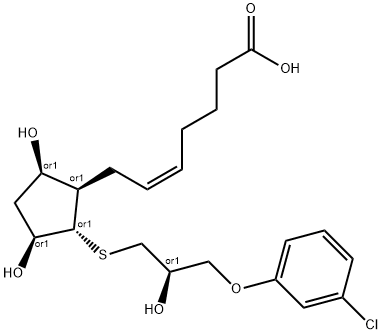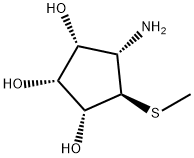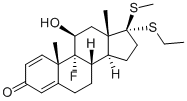Cyclopentanethiol
Synonym(s):Cyclopentyl mercaptan
- CAS NO.:1679-07-8
- Empirical Formula: C5H10S
- Molecular Weight: 102.2
- MDL number: MFCD00001369
- EINECS: 216-841-3
- SAFETY DATA SHEET (SDS)
- Update Date: 2024-12-18 14:08:52

What is Cyclopentanethiol?
Chemical properties
Colorless liquid
Chemical properties
Annual: <1.00 lb
The Uses of Cyclopentanethiol
Cyclopentanethiol has used as a food spice. It is a pharmaceutical intermediate.
Preparation
From cyclopentyl bromide and potassium hydrosulfide; by treating cycloalkanone dimethyl dithioacetals with four equivalents of an alkaline metal; from cyclopentyl naphthyl sulfide and an aluminosilicate catalyst.
Definition
ChEBI: Cyclopentanethiol is an alkanethiol.
Taste threshold values
Taste characteristics at 2 ppm: alliaceous, onion, garlic, horseradish, meat, egg, burned, vegetable, celery.
Safety Profile
A human poison. A flammable liquid. When heated to decomposition it emits toxic vapors of SOx
Properties of Cyclopentanethiol
| Melting point: | -117.76°C |
| Boiling point: | 129-131 °C/745 mmHg (lit.) |
| Density | 0.955 g/mL at 25 °C (lit.) |
| vapor density | 0.96 (vs air) |
| vapor pressure | 1 mm Hg ( 20 °C) |
| FEMA | 3262 | CYCLOPENTANETHIOL |
| refractive index | n |
| Flash point: | 77 °F |
| form | Liquid |
| pka | 10.87±0.20(Predicted) |
| color | Clear colorless to pale yellow |
| Odor | at 0.01 % in propylene glycol. alliaceous onion garlic horseradish vegetable celery eggy |
| Water Solubility | Slightly soluble in water; soluble in alcohol and oils. |
| Sensitive | Air Sensitive |
| JECFA Number | 516 |
| BRN | 2343861 |
| CAS DataBase Reference | 1679-07-8(CAS DataBase Reference) |
| EPA Substance Registry System | Cyclopentanethiol (1679-07-8) |
Safety information for Cyclopentanethiol
| Signal word | Warning |
| Pictogram(s) |
 Flame Flammables GHS02 |
| GHS Hazard Statements |
H226:Flammable liquids |
| Precautionary Statement Codes |
P210:Keep away from heat/sparks/open flames/hot surfaces. — No smoking. P233:Keep container tightly closed. P240:Ground/bond container and receiving equipment. P241:Use explosion-proof electrical/ventilating/lighting/…/equipment. P242:Use only non-sparking tools. P243:Take precautionary measures against static discharge. |
Computed Descriptors for Cyclopentanethiol
New Products
(S)-3-Aminobutanenitrile hydrochloride 4-Methylphenylacetic acid N-Boc-D-alaninol N-BOC-D/L-ALANINOL Tert-butyl bis(2-chloroethyl)carbamate 3-Morpholino-1-(4-nitrophenyl)-5,6-dihydropyridin- 2(1H)-one Furan-2,5-Dicarboxylic Acid Tropic acid 1-Bromo-3,5-Di-Tert-Butylbenzene S-2-CHLORO PROPIONIC ACID ETHYL ISOCYANOACETATE 2-Bromo-1,3-Bis(Dimethylamino)Trimethinium Hexafluorophosphate 4-IODO BENZOIC ACID 3-NITRO-2-METHYL ANILINE 1-(2,4-DICHLOROPHENYL) ETHANAMINE (2-Hydroxyphenyl)acetonitrile 4-Bromopyrazole 2-(Cyanocyclohexyl)acetic acid 4-methoxy-3,5-dinitropyridine 1-(4-(aminomethyl)benzyl)urea hydrochloride 2-aminopropyl benzoate hydrochloride diethyl 2-(2-((tertbutoxycarbonyl)amino) ethyl)malonate tert-butyl 4- (ureidomethyl)benzylcarbamate Ethyl-2-chloro((4-methoxyphenyl)hydrazono)acetateRelated products of tetrahydrofuran


![N1-(5-[(2-BENZYL-7-BROMO-2-AZABICYCLO[2.2.1]HEPT-6-YL)THIO]-1,3,4-THIADIAZOL-2-YL)-2-PHENYLACETAMIDE](https://img.chemicalbook.in/StructureFile/ChemBookStructure3/GIF/CB3485293.gif)


![1,4-Dithiaspiro[4.4]nonane(7CI,8CI,9CI)](https://img.chemicalbook.in/CAS/GIF/176-39-6.gif)
![N-(5-[(2-BENZYL-7-BROMO-2-AZABICYCLO[2.2.1]HEPT-6-YL)THIO]-1,3,4-THIADIAZOL-2-YL)-N'-(2,4-DICHLOROPHENYL)THIOUREA](https://img.chemicalbook.in/StructureFile/ChemBookStructure3/GIF/CB5116832.gif)

You may like
-
 Cyclopentanethiol CAS 1679-07-8View Details
Cyclopentanethiol CAS 1679-07-8View Details
1679-07-8 -
 Cyclopentanethiol CAS 1679-07-8View Details
Cyclopentanethiol CAS 1679-07-8View Details
1679-07-8 -
 Cyclopentanethiol CAS 1679-07-8View Details
Cyclopentanethiol CAS 1679-07-8View Details
1679-07-8 -
 1975-50-4 98%View Details
1975-50-4 98%View Details
1975-50-4 -
 2-HYDROXY BENZYL ALCOHOL 98%View Details
2-HYDROXY BENZYL ALCOHOL 98%View Details
90-01-7 -
 2-Chloro-1,3-Bis(Dimethylamino)Trimethinium Hexafluorophosphate 221615-75-4 98%View Details
2-Chloro-1,3-Bis(Dimethylamino)Trimethinium Hexafluorophosphate 221615-75-4 98%View Details
221615-75-4 -
 14714-50-2 (2-Hydroxyphenyl)acetonitrile 98+View Details
14714-50-2 (2-Hydroxyphenyl)acetonitrile 98+View Details
14714-50-2 -
 118753-70-1 98+View Details
118753-70-1 98+View Details
118753-70-1
Statement: All products displayed on this website are only used for non medical purposes such as industrial applications or scientific research, and cannot be used for clinical diagnosis or treatment of humans or animals. They are not medicinal or edible.